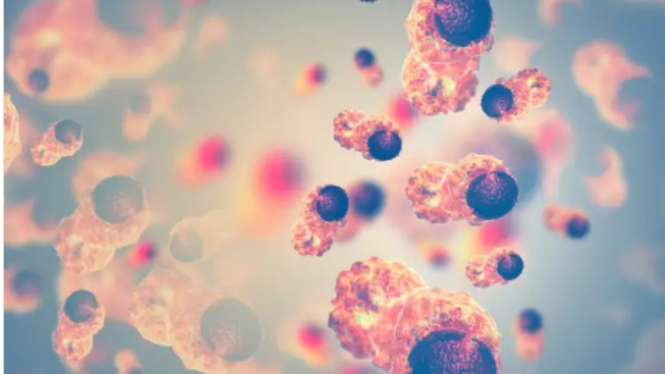Thursday, 23 June 2022 – 18:18 WIB
–
VIVA Lifestyle – The number of cancer cases in the world is increasing. From data from the Global Burden of Cancer Study (Globocan) 2020, the number of new cases of lung cancer, breast cancer and cervical cancer worldwide reached more than 5 million with more than 2.8 million deaths.
Meanwhile, according to the same report, the number of new cases of the three types of cancer in Indonesia reached 137,274 with a death toll of 74,276 – meaning, every day more than 200 families lose their family members due to this type of cancer.
Chairman of the Indonesian Cancer Foundation, Prof. DR. dr. Aru Wisaksono Sudoyo, SpPD-KHOM, FINASIM, FACP said it was necessary to address the high number of new cases and deaths from lung cancer, breast cancer and cervical cancer in Indonesia, by increasing public knowledge about these diseases, their prevention, including all systemic therapy options.
More Prof. Aru Sudoyo explained that one of the breakthroughs in the medical world which is a new hope for patients with lung cancer, breast cancer and cervical cancer is the existence of medical therapy. immunotherapy.
Immunotherapy is a new form of cancer treatment innovation that can increase the ability of an individual’s immune system to recognize and attack cancer cells. Cancer cells have the ability to ‘camouflage’ themselves so that they are difficult to destroy by the immune system. With immunotherapy, the immune system can be improved so that it can detect cancer cells to destroy.
Immunotherapy is one of the modalities of cancer therapy in addition to surgery, radiotherapy, hormonal therapy, targeted therapy and chemotherapy. To determine the right therapy, various tests such as Programmed Death-ligand 1 (PD-L1) are performed. PD-L1 is a transmembrane protein that plays an important role in suppressing the adaptive support of the immune system during certain events or conditions.
–
Tests with PD-L1 immunohistochemistry in patients will show the level of PD-L1 expression in tumor tissue. The higher the expression of PD-L1, the better the response to immunotherapy.
Clinical trial results show immunotherapy treatment can help stop or slow the growth of cancer cells, prevent cancer from spreading to other parts of the body and help the immune system work better at destroying cancer cells.
Aru explained that immunotherapy as first-line therapy in patients with metastatic non-small cell lung cancer (KPBSK) and PD-L1 expression with a certain value, provides a benefit of a two-fold longer life expectancy compared to standard chemotherapy treatment alone.
Patients with advanced lung cancer with a certain value of PD-L1 expression, who were treated with immunotherapy had a 5-year survival rate of up to 31.9%. That is, immunotherapy provides a 5-year survival rate four times higher than standard chemotherapy treatment and reduces the risk of severe side effects (degrees 3-5) by up to 22%.
Regarding triple negative subtype breast cancer (TNBC), Aru explained that with the development of treatment innovations, starting from 2022, immunotherapy has been approved by the POM for the treatment of advanced TNBC. Clinical trial data show that one in two TNBC cancer patients benefit from combination immunotherapy and chemotherapy.
“The combination of immunotherapy with chemotherapy as a first-line treatment for TNBC patients with tumors that have a certain PD-L1 expression value can reduce the risk of death by up to 27% compared to chemotherapy alone,” he said.
 –
–
–
Meanwhile, starting in 2022 in Indonesia, immunotherapy for the treatment of cervical cancer has been available, especially for patients diagnosed with advanced cervical cancer.
On the other hand, immunotherapy is available in hospitals that serve cancer treatment. However, not all types of lung cancer, breast cancer and cervical cancer can be treated with immunotherapy. Patients need to consult a doctor for the best treatment according to each patient’s condition.
“In the fight against cancer, patients must continue to maintain hope, enthusiasm, mental and emotional health, be supported by family and environment, and be orderly in carrying out cancer therapy and treatment according to doctor’s directions so that quality and life expectancy can be maintained,” he said.
–


